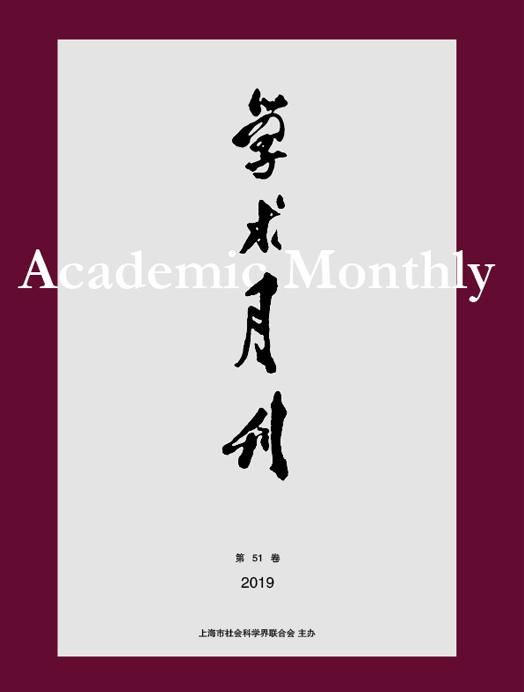Citation:
Zongqi CAI. The Ming-Qing Theories of Literary Creation Centered on the Yi (Creative Conception)[J]. Academic Monthly, 2023, 55(3): 151-161.

The Ming-Qing Theories of Literary Creation Centered on the Yi (Creative Conception)
-
Abstract
In studying the creative process, the greatest challenge is to describe how an author transforms an insubstantial envisioning of the work-to-be into a substantial text of language. Six Dynasties critics like Lu Ji (261-303) and Liu Xie (465-520) sought to tackle this challenge but failed to illuminate the dynamic interplay between the spontaneous mind and the conscious awareness of rules in the final act of composing a text. Tang critic Wang Changling (698-756) ingeniously found a way to overcome this challenge by adapting the term yi 意from calligraphy criticism. Tang and earlier calligraphy critics used the term yi to describe a calligrapher’s visual conception of characters to be written, a mental activity that precedes and then accompanies the act of calligraphic execution. Likewise, Wang Changling employed the term yi to describe the dynamic role of the mind in the final stage of poetic composition. Following the direction of Wang Changling, Ming-Qing critics began to explore the pivotal guiding role of yi in practically all aspects of poetic composition, ranging from the accumulation of creative energy to the choice of compositional modes, structuring, the refining of emotion, selection of images, and the ordering of words. On a more theoretical level, they conceptualized yi as the means to turn lifeless poetic rules to creative tour de force. In a global context, their systematic expositions on the multifarious functions of yi in the final compositional stage fill a void conspicuously left in Western theory of the creative process.
-

-
References
-
Access
-
-
[1]
,
. . Academic Monthly,
2016, 48(03): 104-112.
-
[2]
,
. . Academic Monthly,
2020, 52(10): 179-184.
-
[3]
Zhenman ZHENG
. Forestry Economy and Local Society of Mountain Areasin Ming and Qing Periods. Academic Monthly,
2020, 52(2): 148-158.
-
[4]
. . Academic Monthly,
2017, 49(10): 114-127.
-
[5]
. . Academic Monthly,
2023, 55(1): 138-153.
-
[6]
. . Academic Monthly,
2017, 49(07): 127-135.
-
[7]
Chengwei LIU
. On the Introduction of Anglo-American Law and the Development of Chinese Contract Law. Academic Monthly,
2022, 54(4): 100-120.
-
[8]
Xianliang FENG
. People as the Core of Clan: The Kingship Network and Political Changes of the Qian’s Family in Weitang During the Transition Period from Ming to Qing Dynasties. Academic Monthly,
2019, 51(7): 149-163.
-
[9]
Zongqi CAI
. The Syntax and Poetic Vision of Tang Pentasyllabic Regulated Verse. Academic Monthly,
2019, 51(1): 115-134.
-
[10]
Lifeng MO
. The Close-and-Distant Relationship between Lu You and Tao Yuanming’ Poems. Academic Monthly,
2021, 53(5): 146-153.
-
[11]
Xudong ZHANG
. On the Road: Exile, Correspondence as Genre and the Stylistic Expansion of Lu Xun’s “Becoming Conscious” of the Essay. Academic Monthly,
2022, 54(6): 138-155.
-
[12]
Huansun YOU
. From Jingyou Palace to Zhenying Temple: The Creation and Evolution of the Ancestral Stories of Shi Clan of Susong County in the Ming and Qing Dynasties. Academic Monthly,
2019, 51(3): 162-170, 184.
-
[13]
. . Academic Monthly,
2017, 49(11): 89-127.
-
[14]
Lu LU
. On Jiangzhou Poetry in the Six Dynasties. Academic Monthly,
2020, 52(5): 138-152.
-
[15]
Nengzhi LI
, Dingguang LI
. On the “Mistakes” in Quoting and Discussing Poems in Dream of the Red Chamber. Academic Monthly,
2021, 53(10): 173-181.
-
[16]
. Accounts of Everyday Activities and the Study of Rural Society in Nineteenth-Century Huizhou—— With Reference to Approaches and Sources in the Study of Social History in Ming and Qing Periods. Academic Monthly,
2018, 50(04): 128-141.
-
[17]
,
. . Academic Monthly,
2022, 54(6): 209-216.
-
[18]
XIANG Jinglin
. Self-reporting and Voices: Plain Writing in Nonfiction Literature— A Case Study of Fan Yusu and Chen Nianxi. Academic Monthly,
2023, 55(5): 168-177.
-
[19]
. . Academic Monthly,
2016, 48(05): 27-33.
-
[20]
Fan YANG
. The Social Foundation of Legal Normativity: Recasting the Habermas-Foucault Debate in Context with Legal Philosophy. Academic Monthly,
2022, 54(12): 93-105.
-
-



 沪公网安备 31010102003103号
沪公网安备 31010102003103号 DownLoad:
DownLoad: